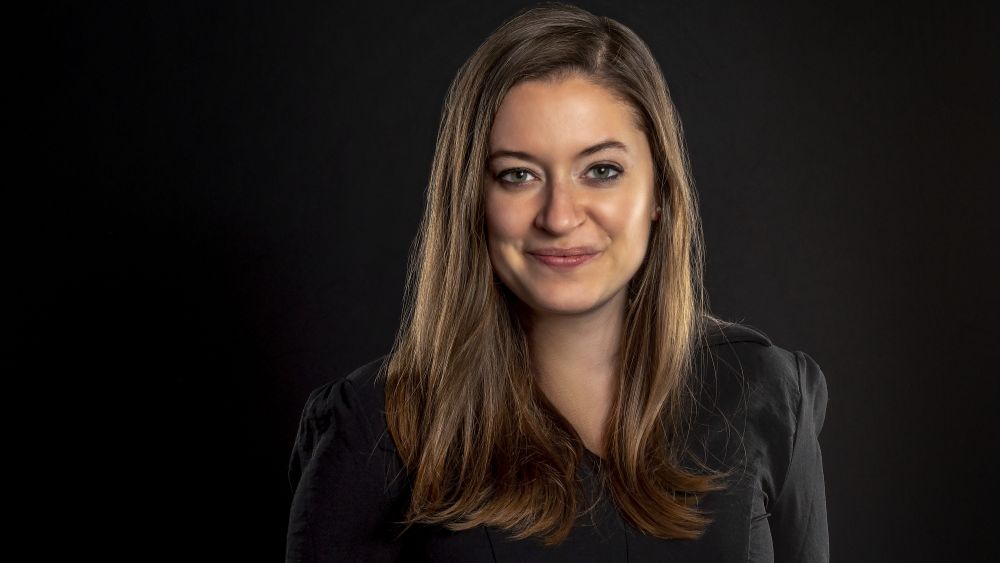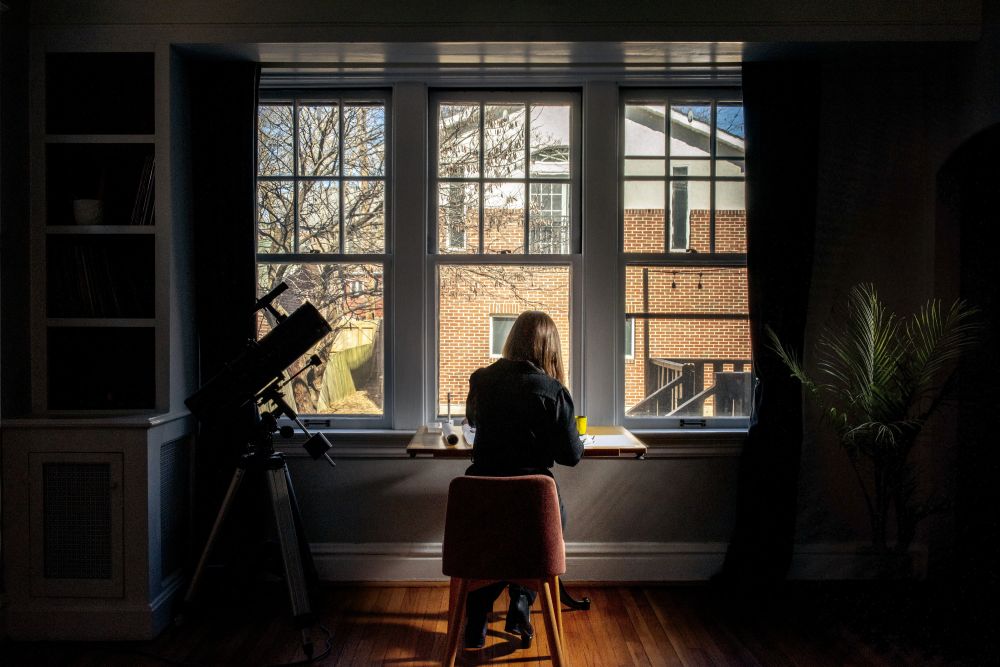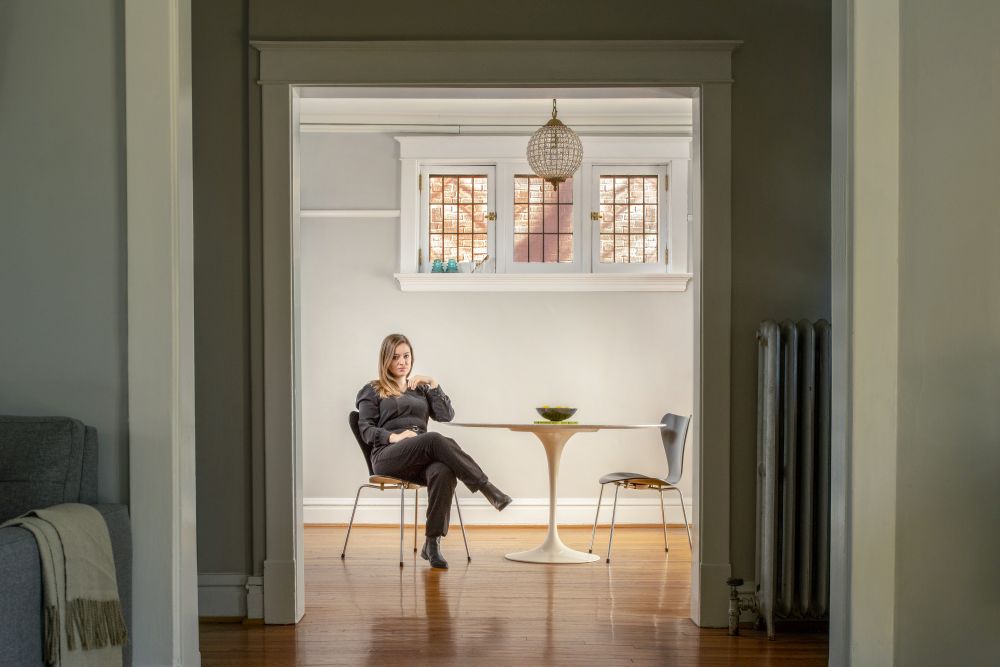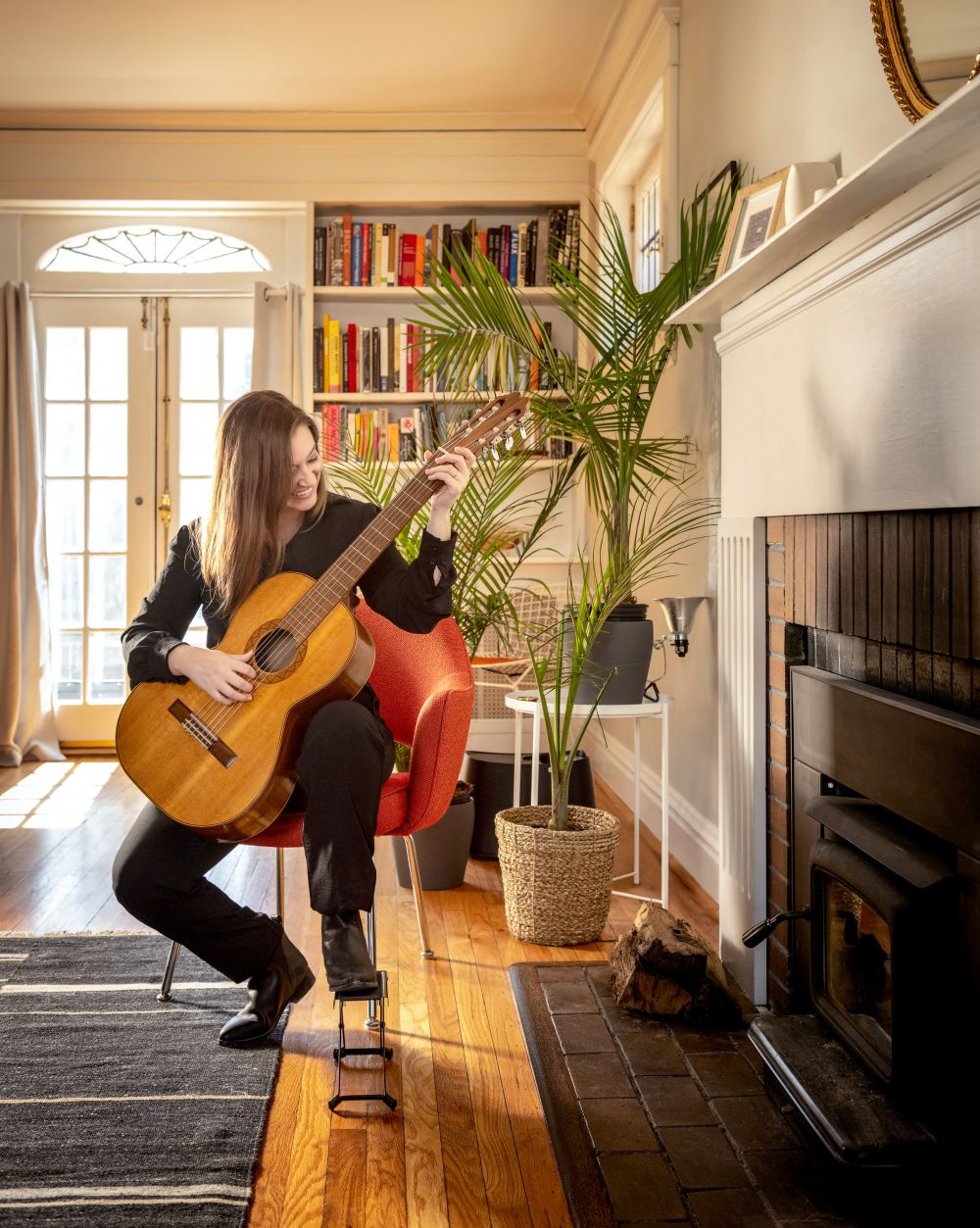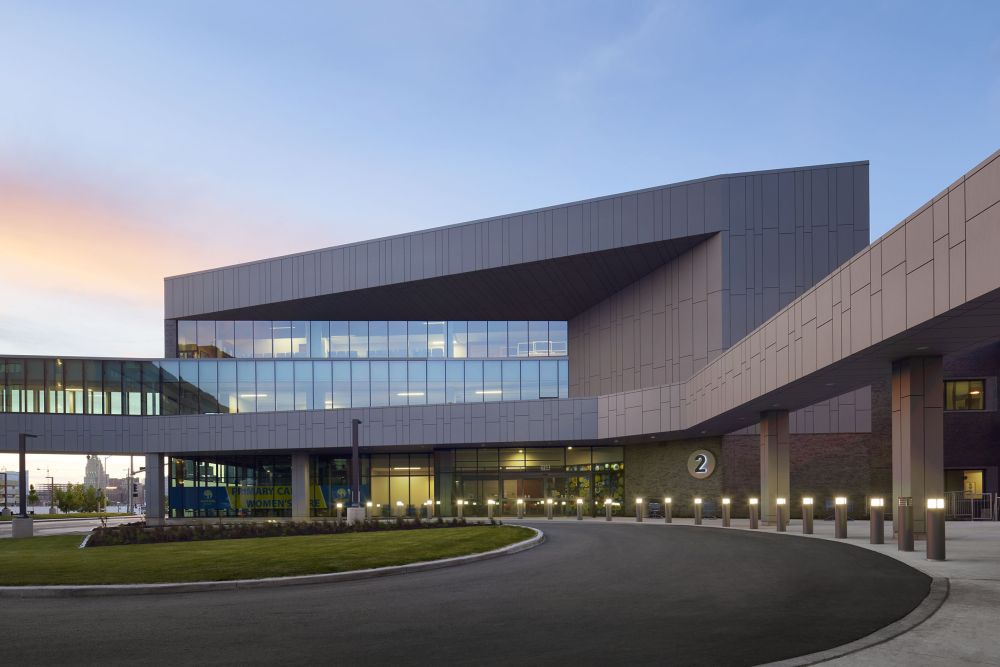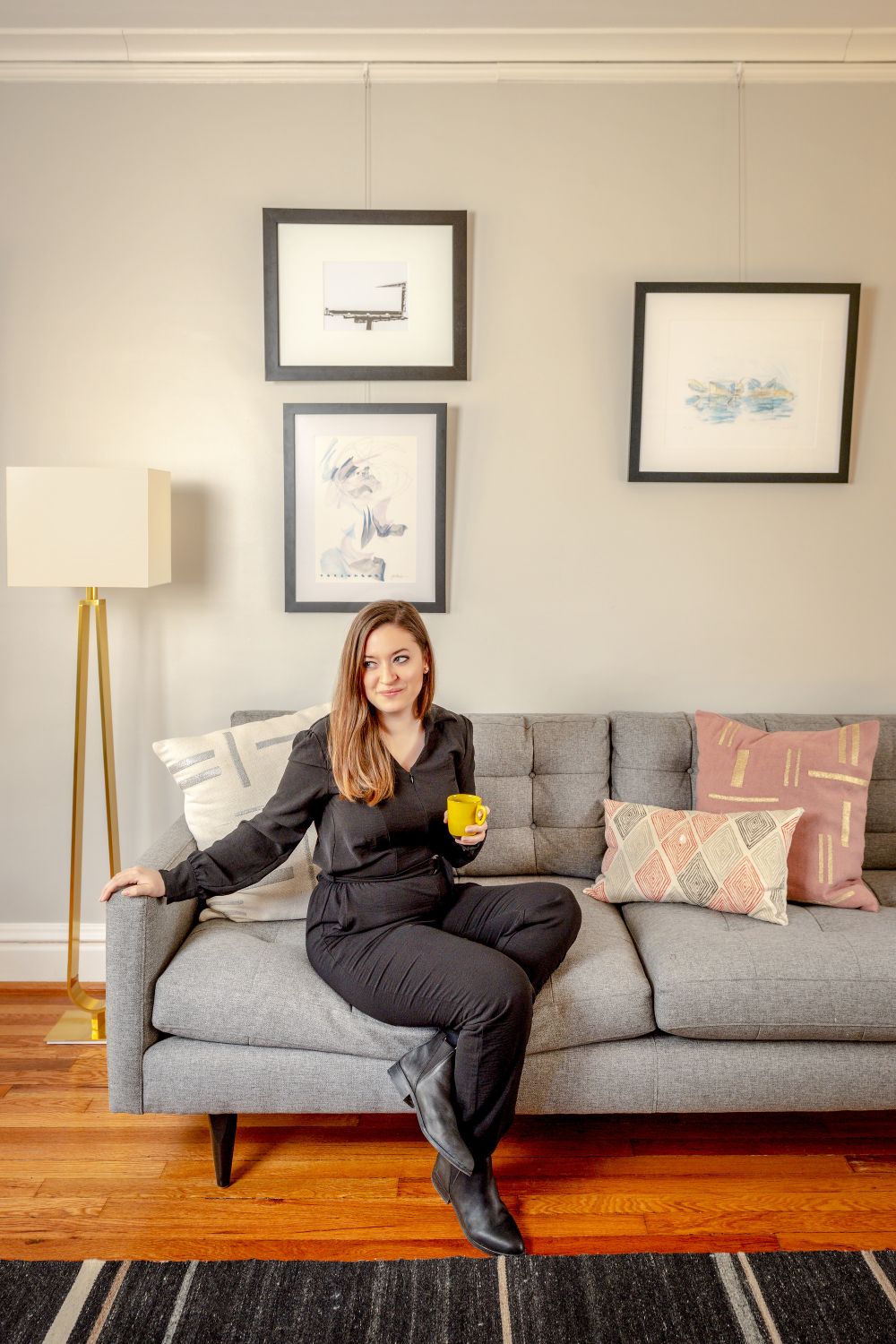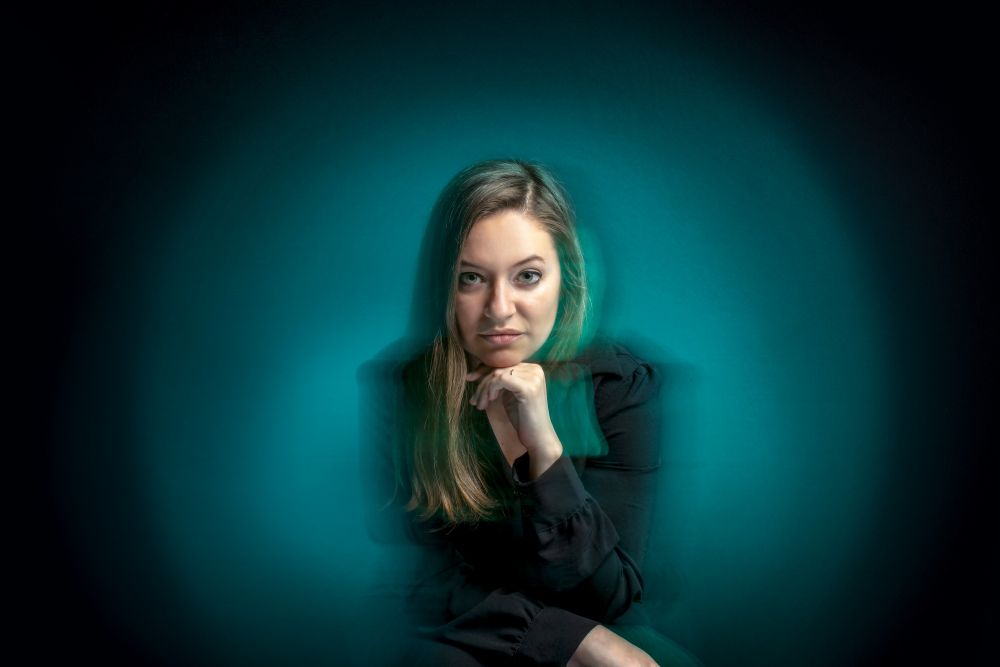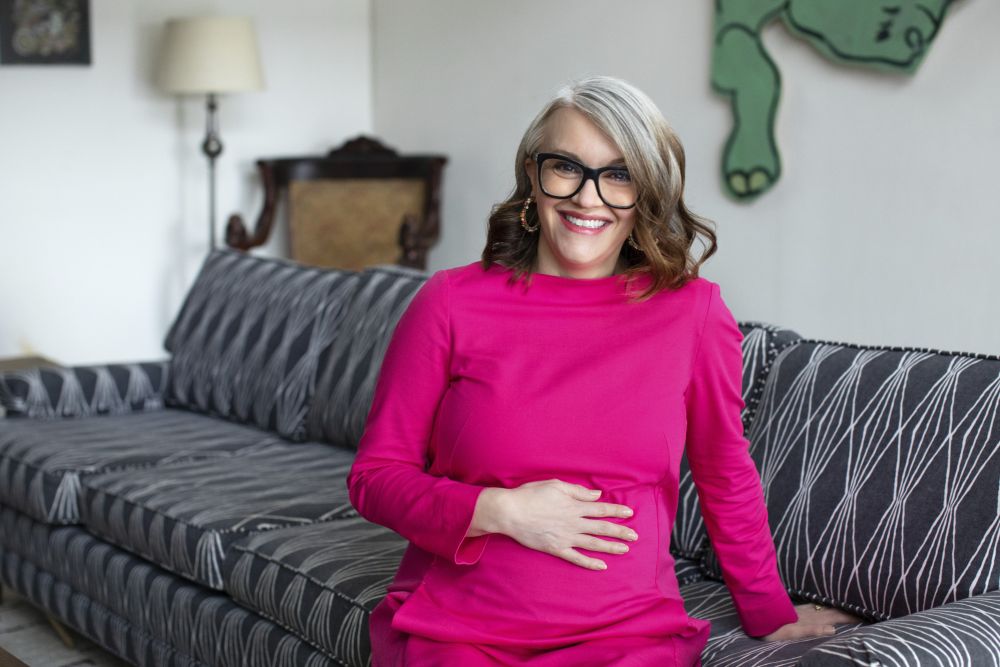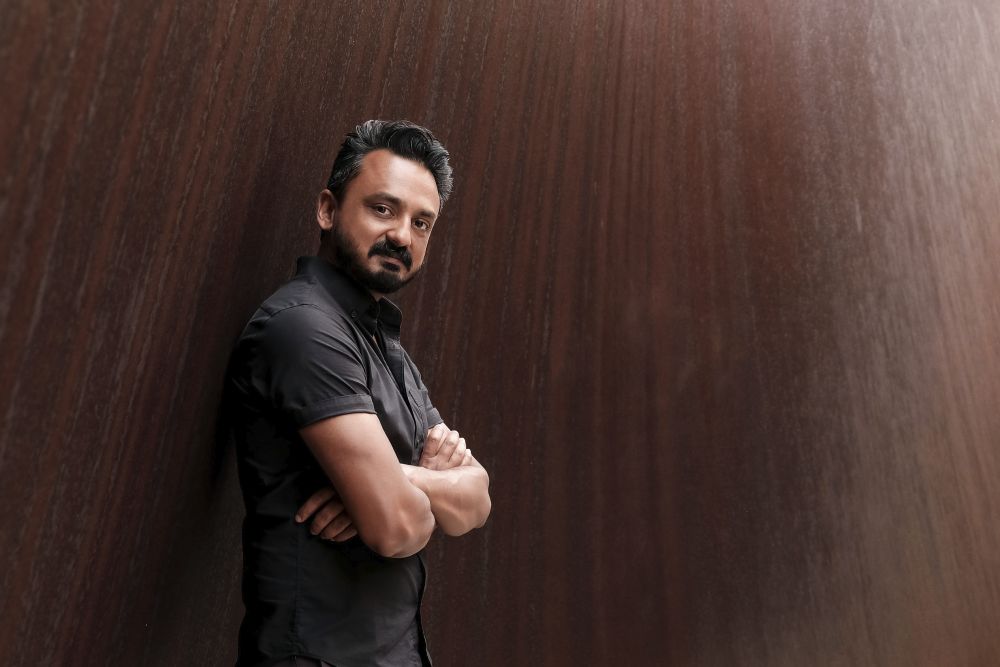Allison Mendez hopes they love how the light shines in
Chris Whitcomb
March 18, 2021
Social Sharing
“What do you consider the most creative work ever made?”
It’s a big question. And even though Allison Mendez and I are states apart, chatting virtually via Zoom with Allison in her new home in St. Louis and me in Buffalo, NY—it’s almost like we can both feel it hang in the air for a second.
“That’s a really hard question to answer,” Allison says. She pauses as if unsure, but there’s a look in her eyes that tells me she’s excited to respond.
“I’m most inspired by the creativity it takes to transform a blank canvas into a beautiful piece of art or music. Creating something from nothing as opposed to something that responds to a more clear prompt. That’s probably the best way I can define the ultimate form of creativity. Does that answer surprise you?’
It does a bit, “Maybe, I thought you might say a specific building, or painting, or Pixar movie.”
“There’s so much creativity in the world. The specific examples that inspire me,” she pauses to visualize some in her mind. “But to take a blank page, with no guidance, no real direction, and create something that inspires for generations. That’s awe-inspiring and remarkable.”
Remarkable, and anything but a blank page, these are accurate ways of describing Allison Mendez’ impressive career to date.
In her early 30s, Allison is currently leading significant projects including a University of Kansas Health Cancer Center, and Mercy’s dynamic new Ballas Outpatient Center. She’s previously designed award winning spaces including a new medical office building for University Health, a conceptual concert hall in Lithuania and an illuminated bridgeway for Atlanta, and much, much more.
It’s indelible architecture complemented by her willingness and ability to lead. She’s been an instructor and frequent critic for architecture studios at Washington University in St. Louis, she’s held various roles on CannonDesign’s Women’s Forum, Next Council, Open Hand Studio and Environmental Awareness Week teams. She chairs an AIA St. Louis chapter design awards committee and has previously dedicated her time to the AIA Central State Region, AIA National, and projects for St. Louis Habitat for Humanity, and the St. Patrick’s Center. This list is just a snapshot of her myriad contributions.
Her work hasn’t gone unnoticed. In 2019, the American Institute of Architects (AIA) recognized her with their prestigious Young Architect Award. Allison was also named to the St. Louis Business Journal’s 30 Under 30 list earlier in her career.
Which reminds me I am fortunate to have 60 minutes of her time to talk about architecture, inspiration, life and more.
Coffee shops and phenomenology
“Let’s pretend it wasn’t a pandemic and I could fly there and we could have this interview in person. Where would we go to chat?”
Allison offers a quick aside on how she loves to travel and looks forward to being able to again soon, then shares, “I’d take you to the coffee shop my husband and I designed. Blueprint Coffee on Watson. It’s a great space, even better coffee.”
I make a note to Google the coffee shop when I have time later. Then I remind Allison we collaborated on some responses for a local St. Louis Business Journal profile in late 2020, and that there are a few comments in those responses I want to chat deeper on. “Let’s talk about new words, your grandfather and guitars, and the barred owl.” She says this sounds good to her.
“So you taught me a word back in November. You said you consider yourself a ‘phenomenologist,’ can you elaborate on that word and what it means to your work?
“It’s tricky to explain,” she says. “But, to me that word echoes in how I consider the emotional states of a building, how things are designed to make people feel a certain way. No matter the project, or constraints of any specific project, I try never to lose sight of the emotional and human experiential aspect of design. It really transcends all different architectural styles and typologies.
Actually, my husband teaches architecture here in St. Louis and he recently led his class through an exercise that I think really speaks to phenomenology. He wanted them to draw a sanctuary, but he didn’t just want to put that word “Sanctuary” out there as an assignment, because the word itself inherently brings preconceived ideas, notions and politics.
So he asked them to draw a place they couldn’t return to, and the responses were so powerful. Memories, homes, moments, one student drew a brightly lit football field where he’d once been a quarterback. He can’t go back there, he’s lost that, and he channeled that and went on to design a place that could help homeless teenagers. It was moving, inspiring work—Does that line up with your definition for the word,” she asks.
“Definitely,” I say. “But I said I didn’t know what it meant, so you didn’t have a huge bar to clear.”
Allison nods and continues, “Back when we used to go to coffee shops and bars, I noticed I always sit with my back against the wall, looking out. I like to see people, the sunrise, the sunset, having that connection with the larger world but with a bit of security behind me.
“All of us, people, cultures, we have these common experiences, wants, needs that are very human, that allow us to make connections. I think about those connections when I think about that word. And, I just think that approach helps me design. It helps me consider the people who will use a space, their comfort, their safety, their views, their joy. Even if somebody doesn’t like a building I design at full scale, I hope they find a moment where they love the way the light shines in.”
“Can you think of a specific example from your current work?” I ask back through the Zoom chat.
She pulls up images of the University Health project on her computer to show a few spaces. “I love reading how their marketing team writes about this building,” she tells me. “They’re not architects themselves, but they’re always talking about the aesthetic somehow. The glass, the light, the brick and metal, that’s how they describe the building, not just its program, but its architectural elements, that’s really flattering to me.”
“And this is part of a safety net hospital,” Allison continues. “It’s not a for-profit venture with a large budget. But the building is designed as an important civic building. It is contemporary, real, important. I hope people think it feels thoughtful. We really tried to give it an aesthetic and character richer than most medical office buildings. We wanted it to instill pride, for it to feel sheltering, protective, safe.”
“So that’s phenomenology,” she says. We laugh briefly and scroll through a few more images of Allison’s work. Then I tell her I want to talk about her grandfather. I’ve heard her talk previously about the significant role he’s played in her life and career arc.
Family and Music Lessons
She gladly pivots the conversation, but tells me that story begins with music. She tells me how she grew up in the Denver-area just a few minutes from her grandfather, Jeff, and that he always wanted to play a musical instrument. The story, as he used to tell it to her, is that “he wasn’t much good at playing,” so instead, he learned how to build instruments.
Allison smiles widely at this point, “it’s crazy to think that making instruments is easy comparatively, but that’s what he did.” Her grandfather would buy old instruments, read up on them at the library, then take them apart and build renewed ones, and then eventually brand new ones from scratch.
“He built violins for my sister, and then when I was ready to take up an instrument, he had a beautiful guitar he had built many years earlier, just sitting there, waiting. He gave it to me along with my lifelong love of music,” she explains. “During the pandemic, I’ve actually virtually reconnected with my former instructor. I’m taking guitar lessons again. It’s wonderful.”
“How did that lead to architecture?” I ask.
“Maybe less of a direct path,” she says, “But he loved making all sorts of things, not just instruments, and I would spend so much time with him in his woodshop. He would make something out of wood, maybe a horse or a little figurine, and I would paint it. He helped me with every diorama I ever made in school, and let’s just say, even when there wasn’t one assigned, we still made them. Building models in school was a natural transition. By the time I decided to become an architect, he had severe dementia. I’m not sure he fully grasped that I’d made that career decision, but I know he would have been proud.”
It’s another moment during our virtual conversation where the words seem to hang in the air.
Nature walks and what’s next
“One more topic before I let you go back to decorating your new home,” I say. “Tell me why you love the barred owl.” Throughout quarantine, I’ve been following Allison on Instagram and seeing that she takes daily walks through Forest Park in St. Louis. She posts photos of trees, wildlife and has demonstrated an affinity for the Barred Owl.
Before we get to the Barred Owl, she explains her nature walks. She’s never been known as a “nature lover” but has always had a passion for swimming and snorkeling with her family (a passion she acquired from her father). “I can be amazed by one animal, a fish in the water, a furry caterpillar in Forest Park, and once I find it, that’s the entirety of my attention,” she tells me. During the pandemic, her daily walks have become part escape, part joy, part wonder.
“So the Barred Owl, that’s just your favorite fish or fuzzy caterpillar to admire,” I persist.
Shakes her head no “That’s a sad story.” She tells me about a college friend who passed away tragically more than a decade ago. The night of his funeral, an owl landed on his bedroom window at his family’s home.
“And then, I was taking a nature walk earlier this year through Forest Park on the 10-year anniversary of his death, and for the first time, I saw the two Barred Owls in the park. One swooped down just feet from me and then called for its partner. The two flew around me the rest of my walk,” she explains. “I’m still excited about that moment. And now, I see them all the time.”
It’s a story about owls, a story about tragic loss, a story about friendship, and a story about hope. We agree it’s a story to end our conversation on.
“Next time, Blueprint Coffee on Watson,” she tells me. I agree and then we wish each other a Happy New Year. I tell her I’ll dive into my notes the next day and send her a draft soon. I lie.
It’s two weeks later, when I revisit our conversation. I read written notes, re-watch our Zoom call, page through her previous Young Architect submission, look at images of her projects again. So much of it is impressive, but there’s two pieces that stand out especially.
First, written in her Young Architect submission is a quote from CannonDesign Executive Director David Polzin. He says of Allison, “For a young architect to bring forward intellectual rigor in her work, or to be emotionally evocative through architecture, or to have the qualities of leadership, is indeed rare. To possess all three as Allison does is exceptional.”
It’s a fitting statement about the woman I’ve been fortunate to get to know better through our recent interviews and my exploration of her design work.
And second, there’s a moment during our Zoom interview that seemed like nothing when we first chatted. I ask Allison what she’ll be working on in 2021 after she moves on from the University Health and Mercy projects. She tells me she isn’t sure, that while our St. Louis office has won a number of new projects over the past year, she hasn’t yet been assigned specific ones. “I guess that’s a bit of a mystery,” she tells me.
A bit of a mystery, yes. But it dawns on me, also a bit of a blank canvas. And while Allison has already told me those are the projects she finds most creatively daunting, something tells me she’ll inspire us with whatever comes next.
Photography credit: Laura Peters of CannonDesign
